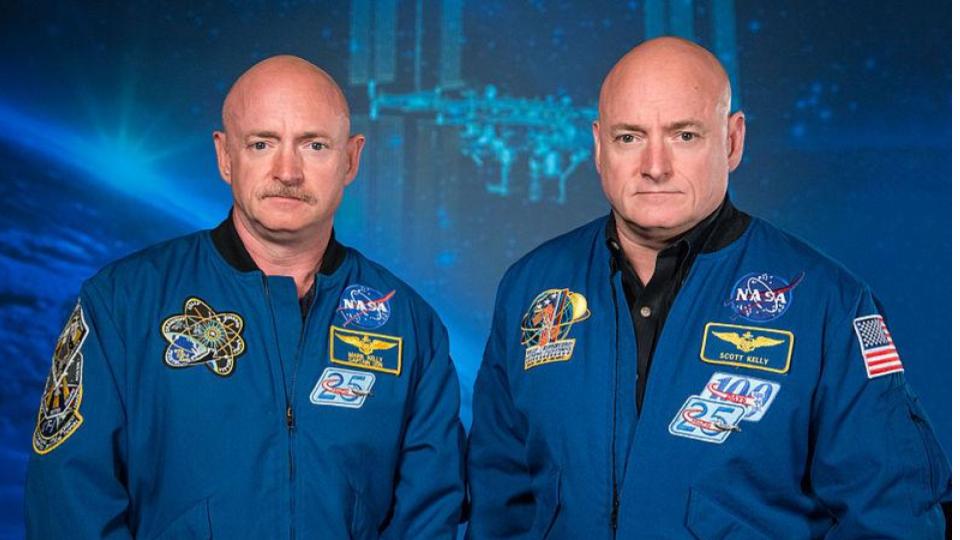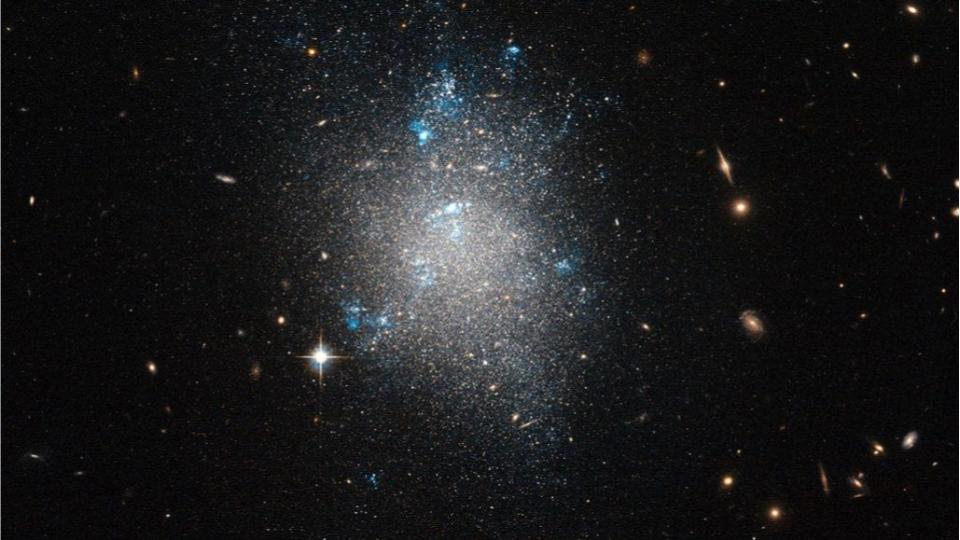Today we take a deep dive into why human spaceflight is troubling, why antimatter might be rare in dwarf galaxies, and how our Solar System changes size based on the solar wind – changing when New Horizons could leave our system.
Later this week, SpaceX is launching a resupply mission to the International Space Station. I’ve got to admit, I’m a little bitter, and hoping for delays. This launch was originally scheduled for next week, and in an effort to use up hotel points that expire at the end of the month, Susie, Annie, and I scheduled a trip to Florida to see that launch and hopefully catch other things like abort tests and engine firings as SpaceX, SLS, and so many other companies race forward in their haste to get humans back on the moon, and eventually all the way to Mars.
Sometimes it feels a bit like all these companies are running with scissors. Sure, that’s one way to get the paper cut faster, but if you trip and fall really bad things can happen. Currently, the US is planning to land humans – specifically women – on the moon by 2024 and multiple nations are hoping to take advantage of the 2033 orbital alignment of Mars and Earth to send people on a shorter path to the Red Planet.
This fast track to Mars is concerning because we really don’t understand how to keep humans safe in space, and we’re still learning what factors we need to consider. It’s also not clear that the people pushing toward Mars are putting as much effort into doing the needed biomedical R&D as they are into hardware R&D.

As a case in point, I’d like to point you toward a new study in Science that looks in detail at how being in space for one year affected Astronaut Scott Kelly. According to an article in Wired Magazine, this study wasn’t originally part of the plan when Scott was preparing for launch. Rather, it was something put together when he asked about how he should answer media questions about him and his twin brother Mark Kelly, and what could be learned from having identical twin astronauts. According to Wired, the original answer NASA provided was that nothing was planned, and it was only after doing some asking around that a team of very interested researchers was put together and protocols were developed.
While I find this lack of long-term, systematic human medical research frustrating, at least a plan was put together, and now we have an opportunity to read the results… and the results aren’t good.
While in space, Scott Kelly experienced deterioration of his vision and his cognitive abilities that weren’t reversed by returning to Earth. Yes, going to space actually made him less smart and less able to see. While in space, and for a long time after, he also faced immune system challenges. Prior work has shown that astronauts see a 50% reduction in their bodies’ ability to kill cells that can cause leukemia. Studies of Scott’s genetics showed a fascinating, and somewhat concerning, activation of 10,000 of the 58,000 known genes in his genome. A good deal of this appears to be a stress response, and researchers point out that it is unclear what proportion of the stress response is due to being in space, and what is due to the side-effects of being on the ISS, like a lack of common comforts, and the terrible smell, noise, and sleep deprivation. It could be, his body was responding like that of anyone living in a harsh environment, and that we simply need to take better care of our astronauts by providing better living conditions. That said, we also don’t know what proportion of this gene activation is due to the human body really just not coping with microgravity. Whatever the cause, we need to pay attention because while most of those genes deactivated after return to earth, a cluster of those associated with immune function and DNA repair didn’t. That adds up to an added risk of cancer. Also affected were telomeres attached to his DNA, which were in many cases critically shorter than normal 6months after he returned to Earth. This increases risk of cancer.
You know what else raises the risk of cancer? Radiation. And radiation is something that astronauts will experience in unhealthy amounts for their entire journey to and stay on Mars. We still haven’t sorted out how to protect people from cosmic rays and other high energy particles, and this is a concern that I don’t see people working to address
Our bodies are designed for gravity, and everything from fluid drainage to blood flow works better when there is an outside force helping our bodies move around its contents. Sci Fi authors often refer to humans as “bags of water,” but it may be better to think of us as really complex distillation towers, with intricate plumbing systems. We are designed to live on a planet with a magnetic field and atmosphere that protects us from radiation. We are designed to live here, but we are driven to explore. I’m cool with that. I want to see people live out among the stars. But I don’t think we’re ready yet, and until we’re willing to spend as much on researching and mitigating the biological impacts of living in space as we are willing to spend on developing hardware to get us to space, there is going to be a disconnect between where our spacecraft can carry us, and where we can thrive.
I get that people are willing to die to see Mars, but let’s not make that the only option. OK?

- Mounting evidence suggests neutrinos are key to why antimatter is rare (ScienceNews.org)
Alright, time for a new topic. One of my favorite kinds of space objects are dwarf galaxies. These tiny blobs of stars are the building blocks of our universe, and the smallest of them have stellar populations that are very similar to those of globular clusters. Exactly how a blob of material can sometimes form a globular cluster, and sometimes form a dwarf galaxy, is one of those questions I want to see answered. Several years ago, it was discovered that some dwarf galaxies have massive amounts of dark matter, and this hinted at one potential reason. It was found that in system after system, the ratio of regular, luminous matter to dark matter was off the charts, with dark matter dominating in a way we had previously observed. But… that data was for a handful of not too distant systems, and in a new study that looks at 324 dwarf galaxies, it was found that not only do the ratios of dark matter to luminous matter in these tiny systems vary greatly, in some cases it appears that dwarf galaxies have almost no dark matter at all. These systems are found in a variety of environments, ranging from right-next-to-massive systems, to being in isolation, so it’s unclear how this happens. While not mentioned in the press release, it’s unclear if the systems that are next to larger galaxies formed there or traveled there. Whatever the case may be, these systems raise questions about our current understanding of galaxy formation and evolution. It looks like you can get systems that look the same, but are radically different, and more work is needed to understand exactly how that is possible.

In our final story of the day, new results from the New Horizons mission confirms results from the early Voyager missions, and finds that the solar wind slows farther from the Sun. This is due to interactions between the solar wind and interstellar material. As it has traveled through the outer parts of our solar system, New Horizons has systematically measured the solar wind, and the presence of ions from interstellar space. These ions interact with the solar wind to both slow the wind and heat it up. In addition to being scientifically interesting, these measurements also help the team estimate when the New Horizons mission will exit our Solar System. Changes in our Sun’s activity level cause the Solar System’s sphere of influence to expand and contract over time, and currently our Sun’s activity is mild, and the Solar System smaller. If this stays the case, New Horizons could exit the solar system in the mid 2020’s, but if the Sun becomes, as it is wont to do, significantly more active, this will push out our solar systems size, and extend it’s travel time.
—————-
And that rounds out our show for today.
Thank you all for listening. The Daily Space is produced by Susie Murph, and is a product of the Planetary Science Institute, a 501(c)3 non profit dedicated to exploring our Solar System and beyond. We are here thanks to the generous contributions of people like you. Want to become a supporter of the show? Check us out at Patreon.com/cosmoquestx
Each live episode of the Daily Space is archived on YouTube. If you miss an episode on Twitch.tv, you can find it later on youtube.com/c/cosmoquest. These episodes are edited and produced by Susie Murph.
We are here thanks to the generous contributions of people like you who allow us to pay our staff a living wage. Every bit, every sub, and every dollar committed on Patreon.com/cosmoquestx really helps. If you can’t give financially, we really do understand, and there are other ways you can help our programs. Right now, the best way you can help is to get the word out. Let you friends know, share our channel to your social media, or leave a recommendation. You never know what doors you are opening.
We really wouldn’t be here without you – thank you for all that you do.


 We record most shows live, on Twitch. Follow us today to get alerts when we go live.
We record most shows live, on Twitch. Follow us today to get alerts when we go live.